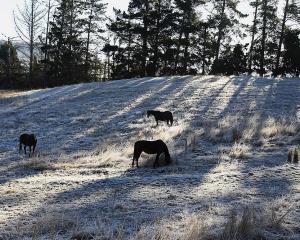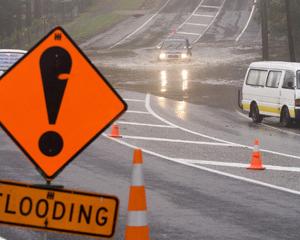The warmer-than-average weather we've been enjoying this winter is set to roll on through the next three months.
According to the latest seasonal outlook, issued by the National Institute of Water and Atmospheric Research today, there's now also less chance of an El Nino playing with the weather this spring, but climate scientists predict the pattern is still on its way.
The summary said temperatures over the coming three months were most likely to be above average for the east of the North Island, and likely to be average or above average for all remaining regions of New Zealand.
Cold snaps and frosts could, however, still be expected in some parts of the country as winter advanced into spring.
Rainfall over the August to October period was equally likely to be normal or above normal in the north and east of the North Island, and normal or below normal in the west of the North Island and in the north of the South Island.
In remaining South Island regions, seasonal rainfall was most likely to be in the near-normal range.
August to October river flows and soil moisture levels were about equally likely to be normal or above normal in the north and east of the North Island, and most likely to be below normal in the west of the North Island.
In the South Island, river flows and soil moisture levels were likely to be near normal in the west, but about equally likely to be normal or below normal in the north and east.
For Auckland, Waikato, the Bay of Plenty and Northland, temperatures were likely to be average or above average, while rainfall totals were equally likely to be in the normal or above normal range.
Soil moisture levels and river flows were about equally likely to be in the near normal or above normal range.
In the big picture, the equatorial Pacific Ocean continued to remain ENSO-neutral at the end of July 2014, with atmospheric and oceanic conditions failing to sufficiently couple to initiate an El Nino event.
In New Zealand, the ocean-driven system typically brings cooler, wetter conditions, bringing higher rainfall to regions that are normally wet, and often drought to areas that are usually dry.
In El Ninos, farmers in the western, wetter parts of the country often faced significant damage to pastures from too much rainfall, and it was also harder for stock to thrive in the constant wet.
Those in the east, faced with dry conditions, needed to consider food availability for stock.
"El Nino indicators have also weakened in the last month," the report said.
"Thus, the chances of an El Nino event developing over spring appear to be lessening." International guidance still indicated that El Nino was the most likely outcome, with an approximate 70 per cent chance, over the coming three seasons through to the end of summer 2015.
"However, it should be recognised that this guidance is based on model simulations from end-of-June conditions so does not take account of the rapid changes observed in July," the report said.
"The behaviour of the atmosphere over the next month or two will be critical to whether an El Nino event initiates or not." Over the next three months, mean sea level pressures were expected to be lower than normal to the northeast of New Zealand, with higher pressures than normal to the southeast of the country.
This pressure pattern was expected to be accompanied by generally anomalous flow from the easterly quarter.
Sea surface temperatures for the coming three months were expected to be near average off the west coast of New Zealand and above average to the east.
- Jamie Morton of the New Zealand Herald







